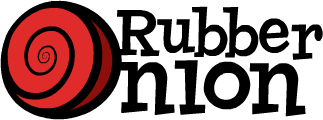Art Direction Stage - "Broken Egg": Part I
Since, for this particular project I don’t have any dialogue to write, the script portion is just made up of bullet notes – just putting in the list of events and actions that happen in chronological order. I’ve gotten that portion down on a few sticky notes and I’ll revisit it before my storyboards phase to make sure everything still works on both a conceptual as well as visual level.Right now, however, I’m doing Art Direction. All this really means is that while building on the concept, I had a few art styles pop into my head and this is the time that I figure out what I want the look of the short to be: vector, raster, realistic, cartoonish, textured, flat, and the list goes on and on.I knew that, given the slightly somber and desperate tone, I definitely didn’t want the look to be too clean; so with that, vector is out. Through the whole process of discovering what would fit this material best, I kept thinking about some of the children’s picture books I grew up with. If you take away the beginning and the end those books would be quite sad and rough, which is exactly what I decided to go for. Much of the “Broken Egg” story will be in mountain stream-like rapids, with many rocks in the path, dead trees on the bank and up the rock walls – a rather uninviting area for something so fragile. Now I’ve decided: texture is in.With all this talk of texture I knew I was talking about painting... and if I’m talking about painting I’m talking about a lot of work per image. It’s OK, though, because while settling on the art style in my head and going with a picture book style from my childhood, another light bulb went off: Reading Rainbow. Reading Rainbow was a show I used to watch on PBS here in the states that would take kids’ picture books and voice over the lines in the book while panning and scanning each image on the screen. That’s exactly what I want to do... although, slightly different (with music instead of VO’s and a more specific approach to this being a moving picture story rather than settling solely on panning and scanning. More on this later)So here’s what I’ve got: texture, painting, motion graphics of raster images. That’s it. Now I need to pick my workflow and try it out.For the painting with texture I settled on a program I had gotten called Corel Painter which, since the addition of their artists Oils, gives a great replication of real painting. I’ve never taken too easily to it for two reasons; one: I’ve never been a very talented painter – two: the learning curves from something real to something digital to me have always been a bit steep; however, using a program to do this as opposed to actually painting means that I can produce it faster. Faster is not always better, but when you’re producing everything on your own and you’d like to keep things moving so you can get to your next project, faster is a pretty valuable thing. I just need to get comfortable with the program enough to be confident that I’ve made the right visual and workflow choice. This is exactly what the Art Direction stage is for.I started off by sketching a few mountain stream scenes until I got what I felt was something I could work with; it didn’t take long as I had a pretty good idea what I was after before I even started.
I took the sketch I liked into painter and started putting the style down that I was seeing in my head. For those of you that use the program or that are looking to pick it up, I used the smeary_impasto brush with the impasto_palette_knife as well as the mixer_thin_flat and the occasional swipe of the grainy_blender to fog up some of the background and water edges. I tried slightly different techniques for each rock face and I’ve decided that going forward I’m going to use the technique on the middle ground rock face on the left.
Now that I’ve got a good feeling for the backgrounds and the texture I could get with Corel Painter, it’s on to the characters; that will be in the next blog.



